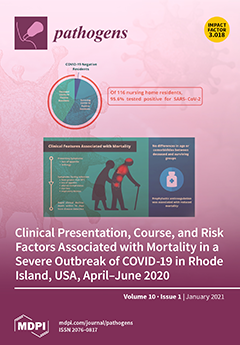View Item
- xmlui.general.dspace_homeCentros e Institutos de InvestigaciónCICVyA. Centro de Investigación en Ciencias Veterinarias y AgronómicasInstituto de VirologíaArtículos científicosxmlui.ArtifactBrowser.ItemViewer.trail
- DSpace Home
- Centros e Institutos de Investigación
- CICVyA. Centro de Investigación en Ciencias Veterinarias y Agronómicas
- Instituto de Virología
- Artículos científicos
- View Item
Balance between retroviral latency and transcription : based on HIV model
Abstract
The representative of the Lentivirus genus is the human immunodeficiency virus type 1 (HIV-1), the causative agent of acquired immunodeficiency syndrome (AIDS). To date, there is no cure for AIDS because of the existence of the HIV-1 reservoir. HIV-1 infection can persist for decades despite effective antiretroviral therapy (ART), due to the persistence of infectious latent viruses in long-lived resting memory CD4+ T cells, macrophages, monocytes,
[ver mas...]
The representative of the Lentivirus genus is the human immunodeficiency virus type 1 (HIV-1), the causative agent of acquired immunodeficiency syndrome (AIDS). To date, there is no cure for AIDS because of the existence of the HIV-1 reservoir. HIV-1 infection can persist for decades despite effective antiretroviral therapy (ART), due to the persistence of infectious latent viruses in long-lived resting memory CD4+ T cells, macrophages, monocytes, microglial cells, and other cell types. However, the biology of HIV-1 latency remains incompletely understood. Retroviral long terminal repeat region (LTR) plays an indispensable role in controlling viral gene expression. Regulation of the transcription initiation plays a crucial role in establishing and maintaining a retrovirus latency. Whether and how retroviruses establish latency and reactivate remains unclear. In this article, we describe what is known about the regulation of LTR-driven transcription in HIV-1, that is, the cis-elements present in the LTR, the role of LTR transcription factor binding sites in LTR-driven transcription, the role of HIV-1-encoded transactivator protein, hormonal effects on virus transcription, impact of LTR variability on transcription, and epigenetic control of retrovirus LTR. Finally, we focus on a novel clustered regularly interspaced short palindromic repeats-associated protein 9 (CRISPR/dCas9)-based strategy for HIV-1 reservoir purging.
[Cerrar]

Author
Pluta, Aneta;
Jaworski, Juan Pablo;
Cortés-Rubio, César N.;
Fuente
Pathogens 10 (1) : 16 (Enero 2021)
Date
2021-01
Editorial
MDPI
ISSN
2076-0817
Formato
pdf
Tipo de documento
artículo
Palabras Claves
Derechos de acceso
Abierto
 Excepto donde se diga explicitamente, este item se publica bajo la siguiente descripción: Creative Commons Attribution-NonCommercial-ShareAlike 2.5 Unported (CC BY-NC-SA 2.5)
Excepto donde se diga explicitamente, este item se publica bajo la siguiente descripción: Creative Commons Attribution-NonCommercial-ShareAlike 2.5 Unported (CC BY-NC-SA 2.5)


